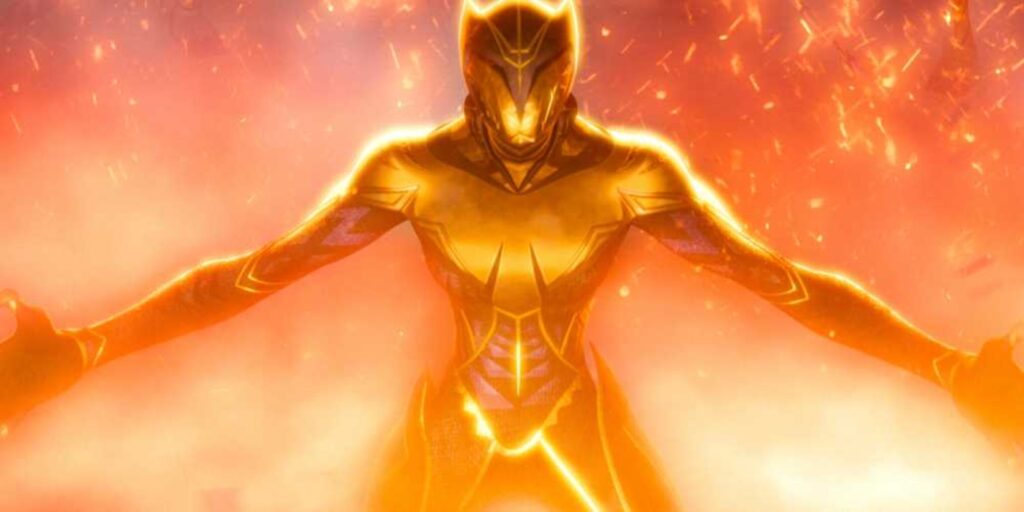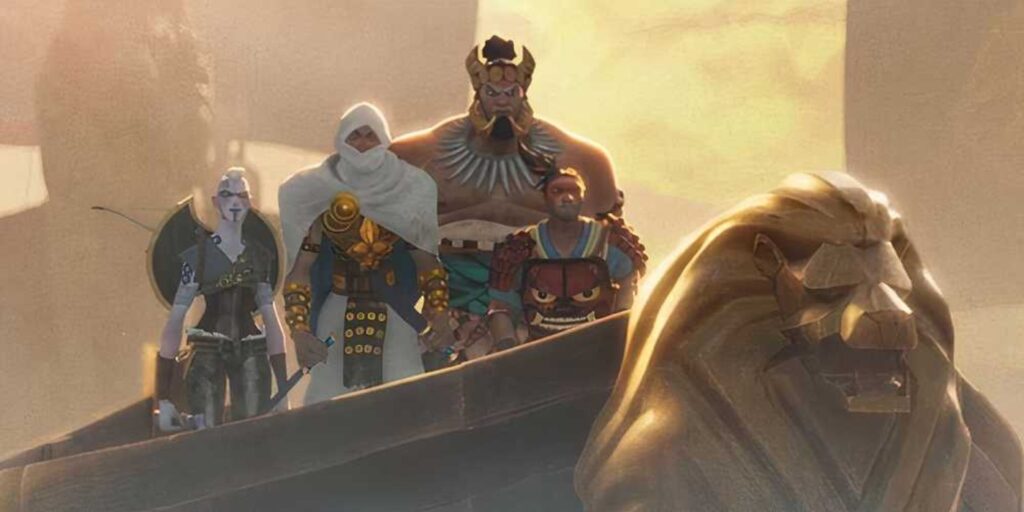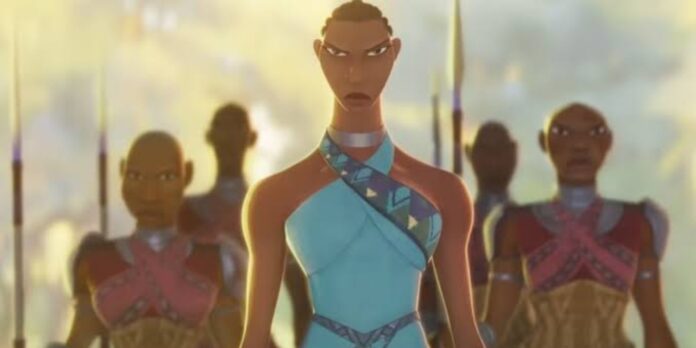Since the first glimpse of Wakanda in ‘Black Panther‘, fans have hungered for more stories from the technologically advanced African nation. Marvel Studios’ animated series ‘Eyes of Wakanda’ finally answers that wish.
It’s an anthology series that offers compelling tales that explore Wakanda’s hidden history. However, beyond the stunning animation and rich storytelling, one question remains: is ‘Eyes of Wakanda’ truly canon to the Marvel Cinematic Universe?
Wakanda’s Hidden History Comes Alive In ‘Eyes Of Wakanda’

For years, Marvel’s animated projects have existed outside the MCU’s “Sacred Timeline.” Series like ‘Your Friendly Neighborhood Spider-Man’, ‘X-Men ’97’, and even the multiverse-spanning ‘What If…?’ have all operated in separate continuities. That’s why it was easy to assume ‘Eyes of Wakanda’, set centuries in the past, might follow the same path. However, this is no alternate reality. Marvel Studios has confirmed that ‘Eyes of Wakanda’ is canon.
Related: ‘Eyes Of Wakanda’ Showrunner Explains Why Animation Was Key To Do Justice To Black Panther Storyline
This means that the events the show depicts are part of the official MCU timeline. The series takes inspiration from the central mystery of ‘Captain America: Civil War’ and ‘Black Panther’: Wakanda’s decision to hide its true strength from the world. The show’s episodes focus on warriors, spies, and agents sent beyond Wakanda’s borders to retrieve stolen vibranium artifacts. Each mission is driven by the knowledge that vibranium’s incredible properties could wreak havoc in the wrong hands.
In one standout story, ‘The Last Panther’, we even learn the origin of the vibranium axe that plays a pivotal role in ‘Black Panther’. This direct tie to the film’s roots the series firmly in the MCU’s history. It also explains how vibranium shaped Wakanda’s technological development. And make no mistake, the Wakanda we see here was centuries ahead of the rest of the world. In 1260 BCE, they had holographic displays.
Eight hundred years later, they were building airships. Their rail system, later seen in the T’Challa, Killmonger showdown, existed long before the modern era. Their weapons incorporated the same kinetic energy redistribution technology as Black Panther’s suit. This level of detail doesn’t just add depth, it makes the MCU feel more lived-in. It shows us how Wakanda maintained its secrecy while pushing science beyond imagination.
Why ‘Eyes Of Wakanda’ Matters For MCU’s Future

In a post-Endgame MCU, where release schedules are slower and some characters’ stories have reached natural conclusions, ‘Eyes of Wakanda’ offers Marvel a new storytelling model. Animation can explore time periods, characters, and conflicts that live-action can’t always accommodate, especially when actors move on or, in the case of Chadwick Boseman, are tragically lost. Marvel has stated they won’t recast T’Challa in live action.
In case of you missed it: Marvel Breaks Its Own Rule Again In ‘Eyes Of Wakanda’ And Fans Are Divided
However, ‘Eyes of Wakanda’ proves they can still tell new Black Panther stories without diminishing Boseman’s legacy. We could see adventures with T’Challa in animated form, or dive into the exploits of past Panthers. Moreover, this approach doesn’t have to stop with Wakanda. Imagine an animated series showing the Avengers between films or some much-awaited teamups.
By blending historical context, intimate character drama, and future-building plotlines, ‘Eyes of Wakanda’ stands as both a love letter to the Black Panther mythos and a proof of concept for expanding MCU canon. In other words, it’s not just canon. It’s a reminder that in the Marvel Cinematic Universe, there’s still a whole world left to explore.





